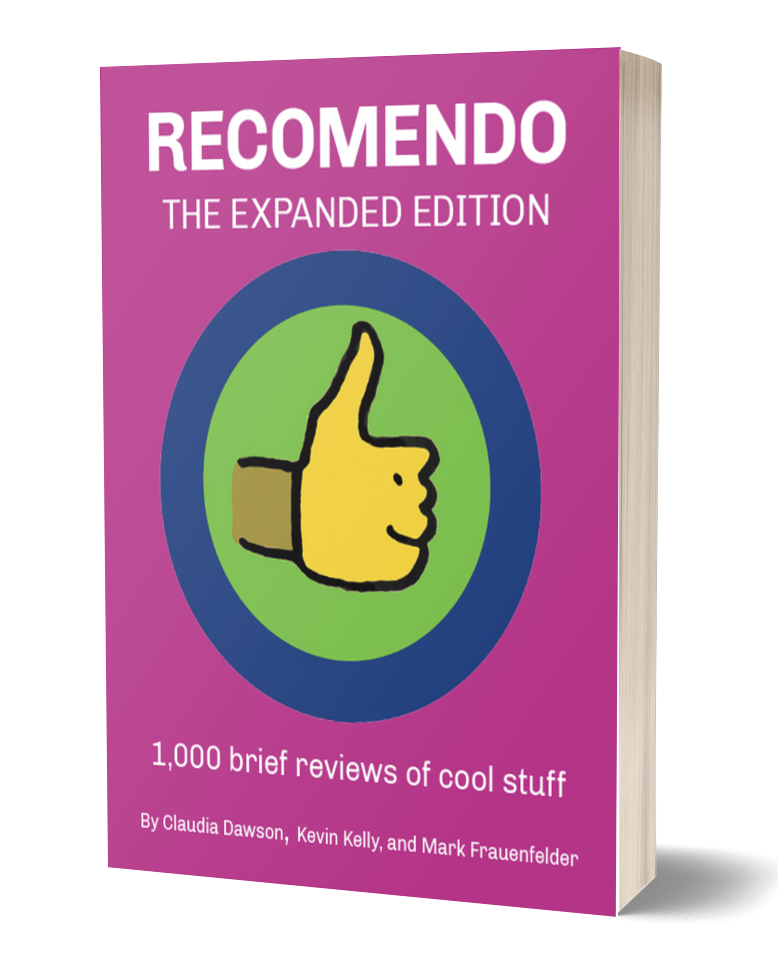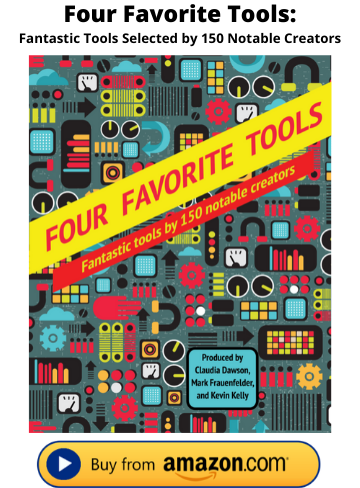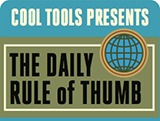16 December 2025
The Gutsy Girl / North African Villages
Issue No. 96
WHEREVER YOU ARE ON THE THE HAVING GUTS SCALE, YOU CAN LEVEL UP WITH GUTSY GIRL
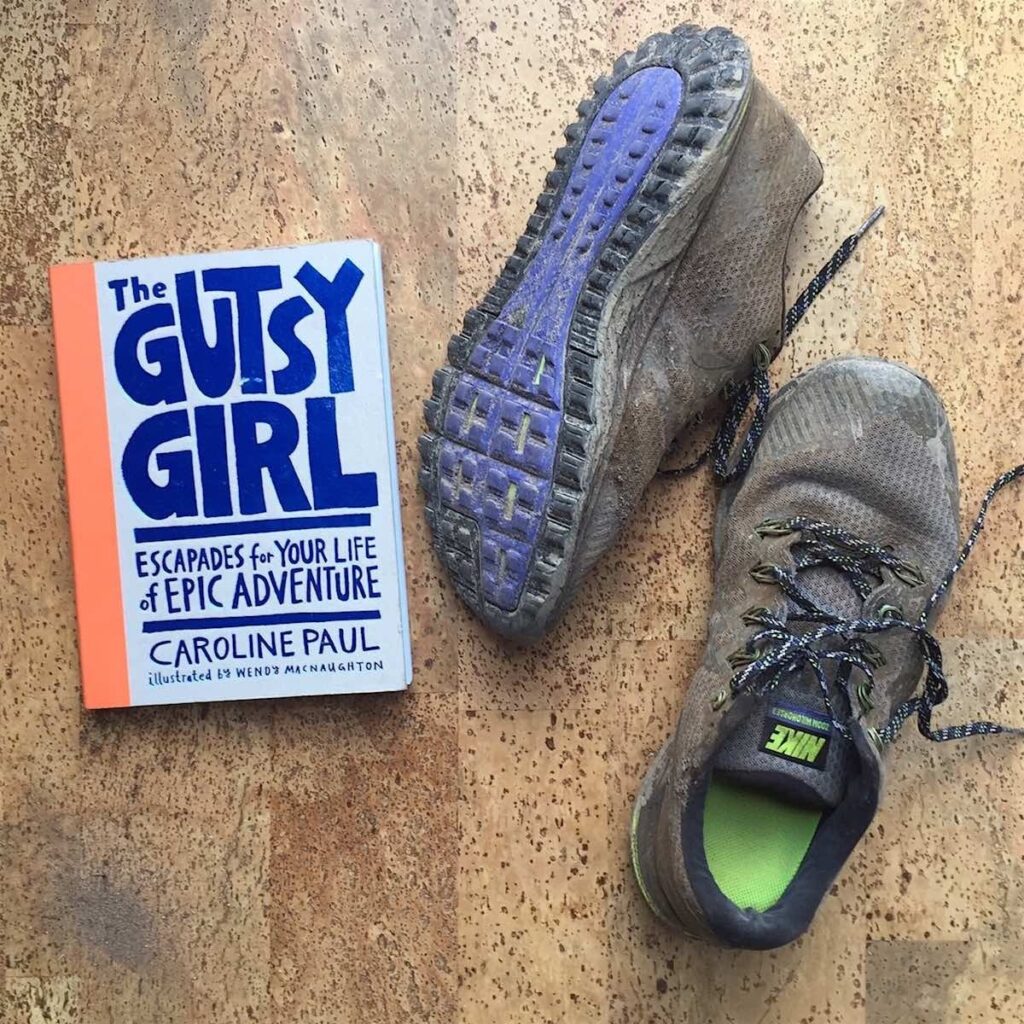

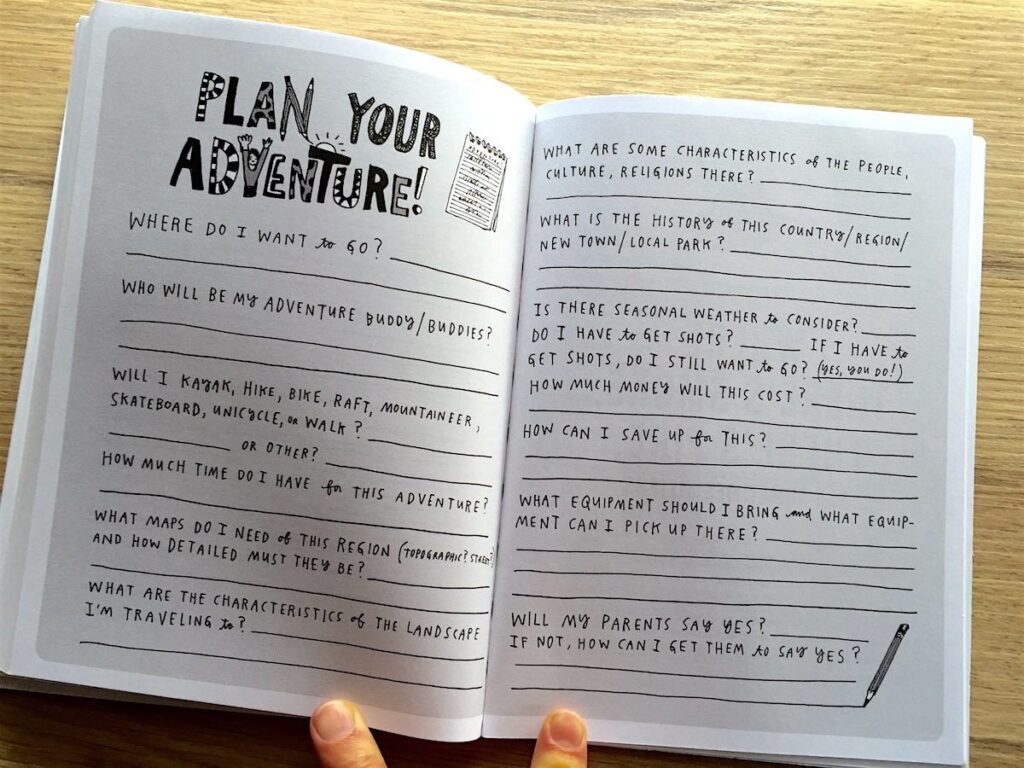
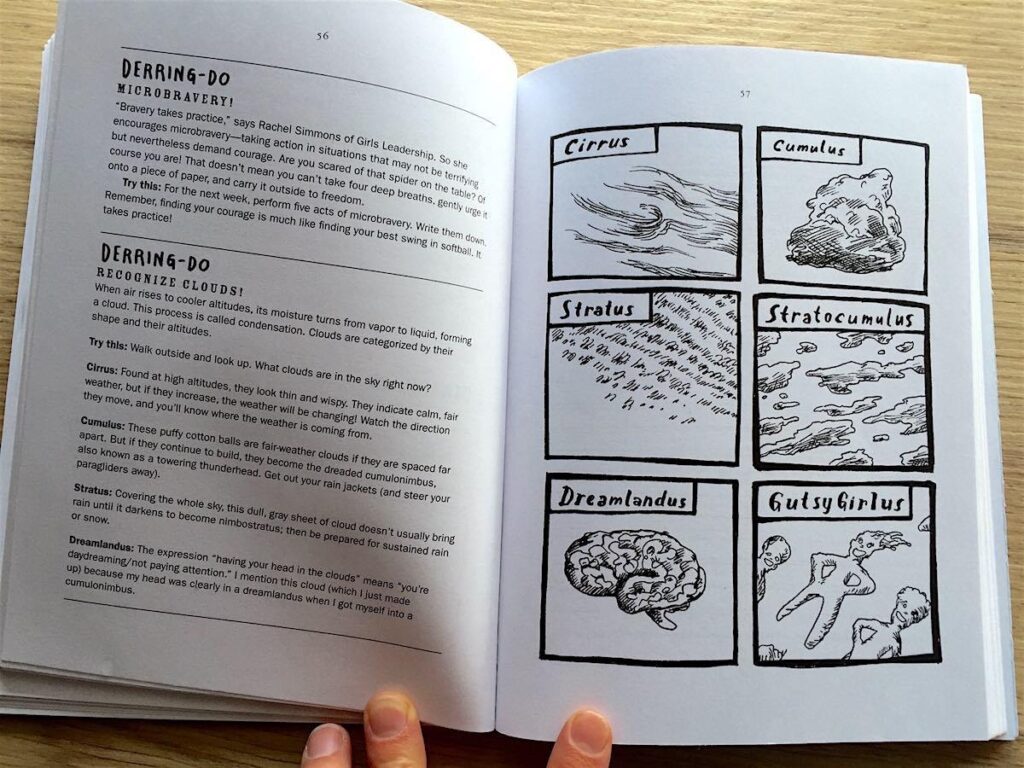
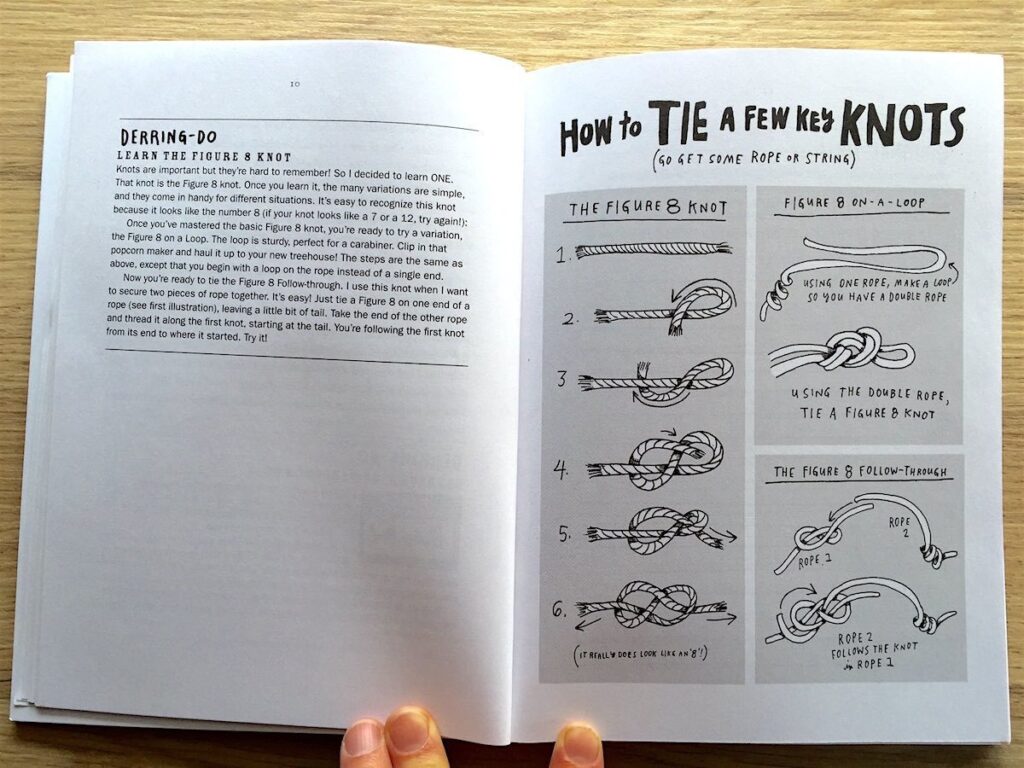
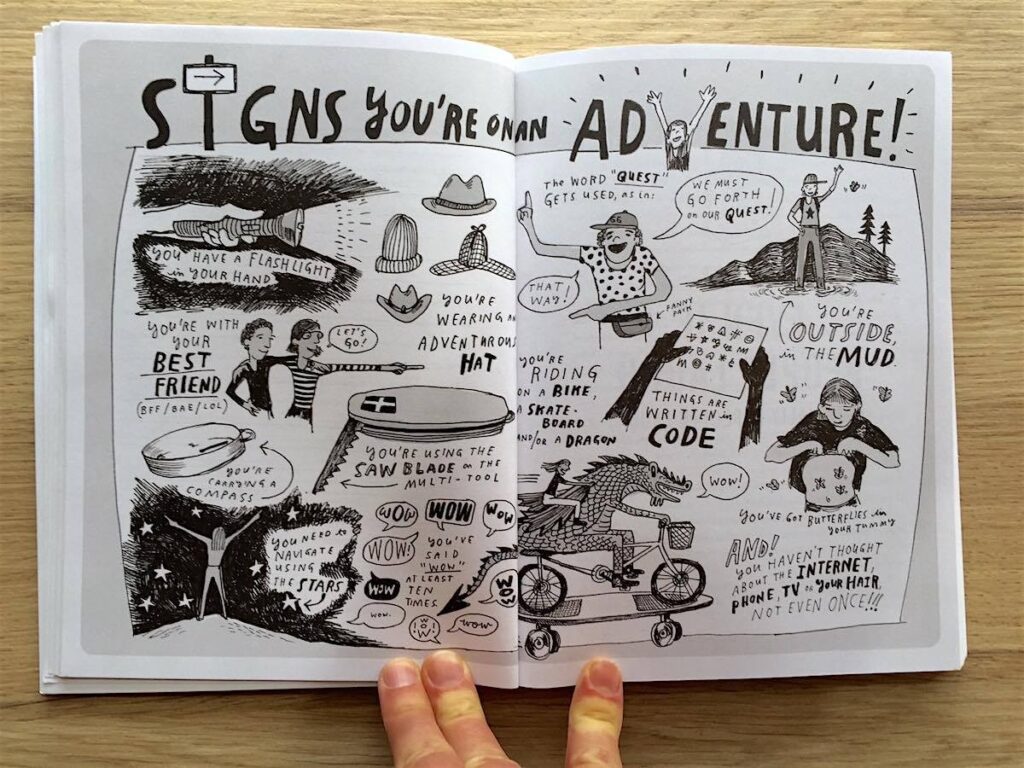
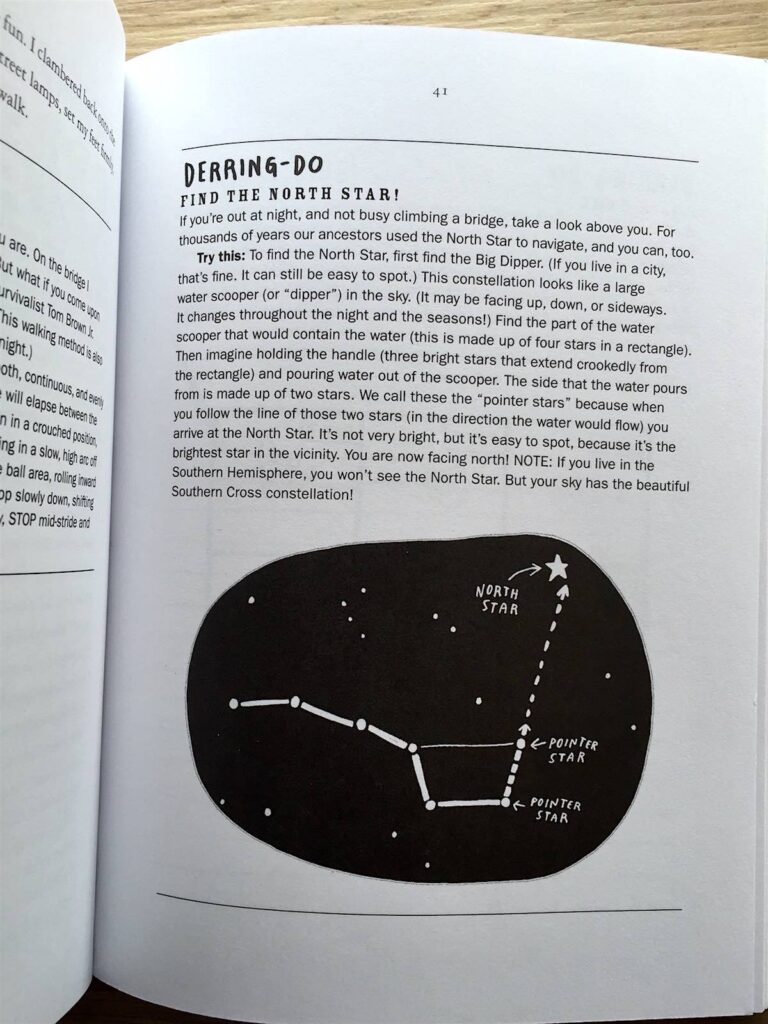
The Gutsy Girl: Escapades for Your Life of Epic Adventure
by Caroline Paul
Bloomsbury USA
2016, 160 pages, 6.4 x 8.6 x 0.7 inches
If ever there was a book I wished was around when I was little, it’s The Gutsy Girl. But I’m just as glad to have it in the world now. While I would have read it to pieces as a kid, it also gave grown-up me a powerful reminder: bravery and resilience are skills. Anyone can develop them.
The Gutsy Girl comprises author Caroline Paul’s stories of her own (mis)adventures, accompanied by short bios and quotes from other inspiring ladies, and helpful how-tos (make a compass outside, find the North Star, recognize animal tracks, etc.). All together, the book is everything it promises to be: escapades for your life of epic adventures.
Throughout the book, Paul models adventure through her own life, from racing a boat she made of milk cartons down a river as a young girl, to white-water rafting and working as a firefighter as an adult. And she shares what she’s learned along the way. While the lessons — about planning, communication, teamwork, knowing your limits and when to push them – and when not to — are valuable, I think the bigger idea is that all of her failures and triumphs are part of a learning process. With each new experience, Paul tests, hones, and ultimately grows her own bravery and resilience.
This idea is also sweetly captured by the book’s illustrator Wendy MacNaughton in a drawing titled “The Gutsy-O-Meter.” Readers are asked to rate themselves on a meter that swings from low guts (watching TV and sleeping) to high guts (sleeping to scaling ice cliffs.) If you’re at six (sleeping outside), the book encourages you to try seven (navigating through woods by compass). If you’re already a 10 — watch out world! – Sara Distin at Tiny Bop
SHOT IN THE ‘70S, NORTH AFRICAN VILLAGES SHOWS MEDIEVAL VILLAGES UNCHANGED BY MODERNITY


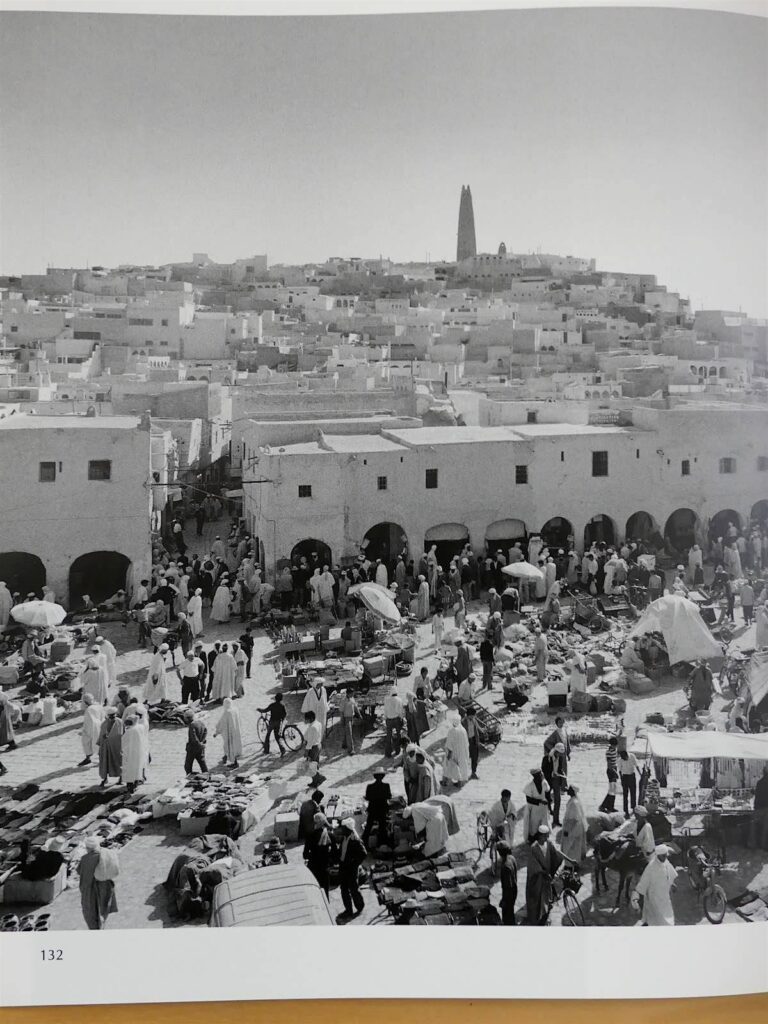






North African Villages: Morocco, Algeria, Tunisia
by Norman F. Carver
Documan Pr Ltd
1989, 200 pages, 9 x 10.5 x 0.5 inches (softcover)
In the 1970s an architectural student drove a VW van around Italy, the Iberian peninsula, and northern Africa, recording the intact medieval villages still operating in their mountain areas. The hill towns at that time in Italy, Spain, Morocco and Tunisia kept a traditional way of building without architects, using indigenous materials, without straight streets, producing towns of uncommon attractiveness. The architect, Norman Carver, later self published a series of photo books documenting these remote villages which had not yet been interrupted with modernity. They looked, for most purposes, like they looked 1,000 years ago. All of Carter’s books are worthwhile, but my favorite is North African Villages. Here you get a portrait of not just the timeless architecture, but also a small glimpse of the lives that yielded that harmony of the built upon the born. It’s an ideal of organic design, that is, design that is accumulated over time. – Kevin Kelly
12/16/2515 December 2025
Anatomy
Tools for Possibilities: issue no. 168

Anatomy atlases
Of my maybe dozen books on anatomy, this is the masterpiece: Atlas of Human Anatomy by Frank Netter. How any one human could do all these exquisite drawings in a lifetime is beyond me. The drawings of the hand are spectacular. There is no descriptive text, so I don’t know if this is the perfect text for helping with self-diagnosis, but this is a reference book anyone interested in the human body should have. I have an older 4th edition, but they recently released the 5th.
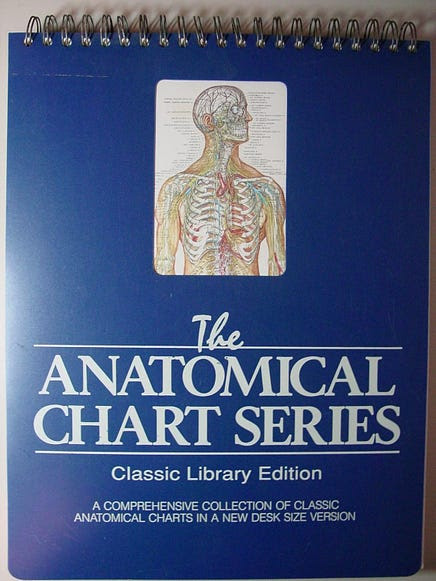
The Anatomical Chart Series by Peter Bachin and Ernest Beck is a flip-page guide that includes excellent anatomical charts. It appears to be out-of-print but you can find it used.
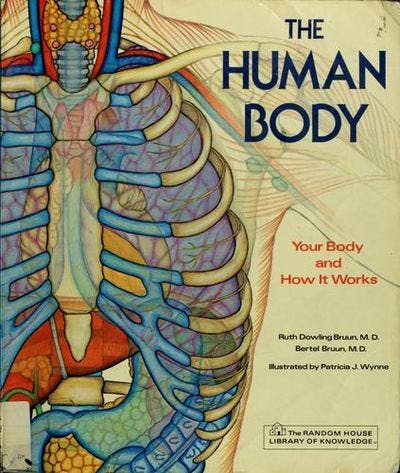
The Human Body by Ruth & Bertel Bruun is a great and colorful children’s anatomy book. You can find it used for around $3. — Lloyd Kahn
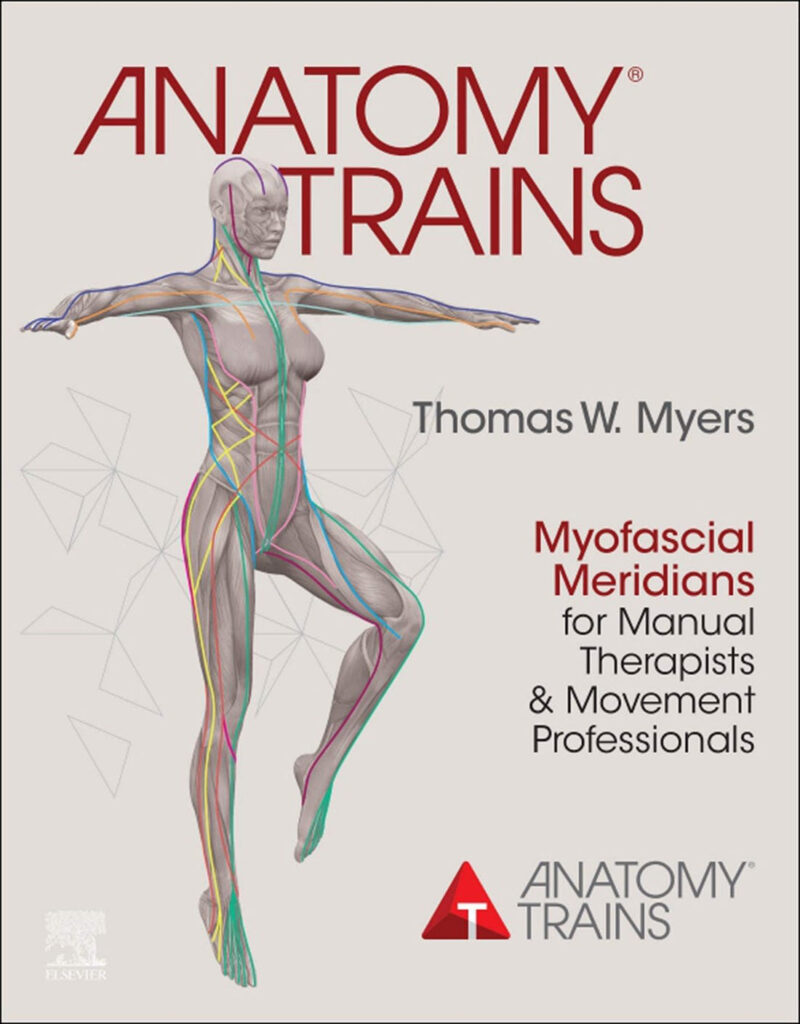
Holistic human anatomy
Anatomy Trains is a map of our musculoskeletal anatomy. It’s intended for hands-on and movement bodyworkers but is a great read for anyone interested in structure, whole-systems thinking, and brilliant design. I realized after doing Pilates for a while that I had no idea about anatomical structure and why Pilates was effective. While advocating no particular body/mind discipline, Anatomy Trains allowed me to understand why Pilates works. That was eight years ago; my understanding continues to expand over time.
Author Tom Myers asks a grand question: what would happen if we take a different cut at understanding the muscles and tendons? Instead of cutting against the grain at the ends, what happens when you follow the grain past the individual muscles and tendons and see how long the lines of tension go? Tom creates a set of rules and then starts mapping.
An anatomy expert could research and apply those rules themselves; I just followed along. The results are pretty cool: a map of about a dozen or so long lines of tension in our bodies. Most of them are longer than we are tall; some are almost twice as long. Some lines are roughly linear and some spiral around our torso and leg bones. Some lines are near the skin while some are next to the bones. Tom created a new term for these lines: myofascial meridians. Nobody has ever done this before, but the lines are real: Myers has gone into the lab multiple times with teams of students to dissect these long lines of tension in cadavers.
Myers studied under two remarkable body/mind instructors: Moshe Feldenkrais and Ida Rolf. He also studied under Buckminster Fuller, the great whole-systems engineer of the 20th century. The first chapter of the book, The World According to Fascia, provides a lot of background information for the mappings in the remainder of the book. Myers notes that there are three fractal/pervasive networks in our body: circulatory/chemical, nervous/electrical, and structural/spatial. He notes the elusiveness of the structural network: while we’ve had clear models of the first two for hundreds of years, our fine-grained structural network is still quite elusive. This is whole-systems thinking at its finest: lots of ideas how natural tech connects from the nano-scale to full-size human beings.
Like the great science book Godel, Escher, Bach: An Eternal Golden Braid, this book can be read at many different levels. The first way is just to look at the maps and the supporting drawings and charts. A second way is to read the various side discussions and notes. A third way is to plough straight through the rather dense text. I’ve never read AT from cover to cover, but I’ve gone through most of it and read almost all of the side discussions.
My one criticism of the book: its full title, Anatomy Trains: Myofascial Meridians for Manual and Movement Therapists, is enough to scare off those not in the industry. It is a wonderful and friendly book, but books like this must have a formidable title to be sold to medical/health professionals. The ideas it discusses are right on the edge of our understanding of biological systems, but there is not a milligram of woo-woo. — Phil Earnhardt

- Humans are not assembled out of parts like a car or a computer. “Body as machine’ is a useful metaphor, but like any poetic trope, it does not tell the whole story. In our modern perception of human movement anatomy, however, we are in danger of making this metaphor into the be all and end all. In actual fact, our bodies are conceived as a whole, and grow, live, and die as a whole- but our mind is a knife.

Body part replicas
I have an inexpensive (and unfortunately no longer available) 30-inch visible man sitting on my desk. Putting it together was an education; I couldn’t believe how much stuff we have crammed into our insides. Everyday the man-model reminds me of the wonder of our temporary home. To go deeper into the full catalog of human meat, you need the Anatomical Chart Company, which carries replicas of most human body parts. Eyes, guts, brains, etc. in three dimensions. They aren’t cheap, but they are detailed. I am looking for a spot in my studio to park their budget life-sized skeleton. It focuses one’s productivity. — KK
Budget Bucky Skeleton
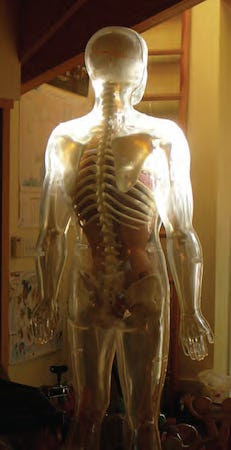
This economical, life-size articulated adult plastic model is our most popular school-level skeleton. It’s ideal for teaching the basics of anatomy when intricate textural nuances of the bone are not required. Articulated joints allow for movement. The arms and legs are removable for study. Features nerve branches, vertebral artery and herniated lumbar disc. Skull includes movable jaw, cut calvarium, suture lines, and 3 removable lower teeth. Includes rolling stand and the PortAPack Systems Set of 5 laminated 8-1/2″ x 11″ charts covering the Muscular, Skeletal, Nervous, Circulatory, and Digestive Systems. Also includes extra hardware for emergency repairs. Size: 5′ 6″ tall. Weight: 23 lbs.
Human Muscle & Skeleton Anatomy Model

A ton of anatomical detail in a tiny package, this 8 inch human skeleton and musculature anatomical model contains 46 detachable parts and display stand. This puzzle-like anatomy model also includes an illustrated assembly guide and description of the human anatomy along with some fun Q&A to test your knowledge. The hand painted parts are medical education quality.
Once a week we’ll send out a page from Cool Tools: A Catalog of Possibilities. The tools might be outdated or obsolete, and the links to them may or may not work. We present these vintage recommendations as is because the possibilities they inspire are new. Sign up here to get Tools for Possibilities a week early in your inbox.
12/15/2514 December 2025
MyTaxReceipt / Digital passport / 2025 photo dump
Recomendo - issue #492
Where your tax dollars actually go
MyTaxReceipt shows you a breakdown of how your U.S. federal taxes get spent — enter your Zip code and the amount you paid in Federal taxes (or you can use the default average for your Zip code). It generates a receipt-style summary showing what portion goes to defense, healthcare, interest on debt, and dozens of other categories. It’s eye-opening to see actual dollar amounts. The site also lets you message Congress about your spending priorities with one click. — MF
Digital passport
You can add a US passport as your digital ID to your wallet app on an iPhone running iOS 26.1 or later. You still need to carry your passport overseas, but you can pull out this ID for TSA clearance at 250 airports in the U.S., including SFO, LAX, JFK and LGA. To do this go to your wallet, hit the + in the upper right, then choose “Driver’s License and ID Cards,” then “Digital ID.” You’ll be prompted to hold your phone’s camera over the photo page of your passport and then you need to touch your phone to the chip embedded in the back of the passport. Then you’ll be asked to take a selfie and do some prescribed head movements to verify you are real. Finally, your application will await verification. Once verified (mine took only a few minutes) your passport ID will appear in your wallet. — KK
2025 photo dump
Two tabs worth opening up in full screen are TIME’s Top 100 Photos of 2025 and BBC Science Focus’s 31 jaw-dropping space photos. The first depicts the past year’s major cultural moments — like political conflicts and climate disasters — and everyday life on a human scale, and the second is a gallery of cosmic wonders, catapulting you out to a higher perspective. Both snapshots of existence feel equally important to witness. — CD
Sweet Korean dramas
I am not a Korean drama aficionado, but my wife is a big fan, and she has persuaded me to watch some of the better ones. When folks who have never seen a K-drama ask where to start, I suggest they watch any of the following three series. All three are exactly the same story: They are all rom-coms set in a modern workplace, with protagonists using multiple crossed identities, love straddling class lines between boss and employee, and convoluted plots that tie everyone together into one story. (There are no coincidences in this world.) In order of ease of access: 1) Business Proposal, 2) Start-Up, 3) Would You Marry Me? — KK
Quickly find all purchases in Gmail
If you want a quick way to see all your receipts in Gmail, I recently noticed that in my personal account a “Purchases” label category was automatically created and added to my sidebar. Unfortunately, this feature is not available in my Google Workspace account. I use both personal and work emails for shopping, so to mimic that view I type “category:purchases” into the search box to display messages that include receipts, purchase confirmations, invoices, and statements. This is especially helpful during the holiday season. — CD
Giant roll of craft paper
I recently spent time with friends who mounted a 36-inch by 200-foot kraft paper roll with a steel dispenser and cutter at the end of their work table. It’s surprisingly useful. Pull out a few feet for messy art projects, cover a table for a party, or tear off sheets for gift wrapping. The cutter gives clean tears across the full width. — MF
Sign up here to get Recomendo a week early in your inbox.
12/14/2512 December 2025
Gar’s Tips & Tools – Issue #207
Access to tools, techniques, and shop tales from the diverse worlds of DIY
10 Great Tool Gift Ideas
I love it when smart and talented makers that I follow give their annual tool recommendations. Case-in-point is Chris Notap’s tool gift guide for 2025. Every one of these is a winner, from the “I am totally ordering a bunch of these for presents” Olight iMini flashlight to the “I also have and highly recommend” DeWalt Oscillating Tool. Besides being a great tool, it will always have a soft spot in my heart ‘cause it’s the last tool my dear ol’ dad gave to me before he died. Other standouts include the Knipex 12” pliers wrench, which looks amazing, the Apple AirTag battery life extender, and the BlueDriver Bluetooth car scan tool.
Tips & Tricks for Using JB Weld
David Riddle’s video on J-B Weld (and J-B Kwik) is one of those tutorials that instantly upgrades your knowledge and approach to a material or process. His whole philosophy for using J-B Weld boils down to: Preparation is everything. Sand until you’ve got some adequate tooth, clean with acetone, mix on something non-absorbent (don’t use paper, card, etc.), spread a thin, even film (he uses a plastic knife like it was a tiny mason’s trowel), and warm the epoxy so it flows into the tooth instead of sitting on the bonding surface. No heavy clamping, no cardboard mixing trays, no wishing. Just clean surfaces, good texture, and slow-cure J-B Weld doing what it does best.
Some Practical 3D Printed Tools
As you likely know, there’s such a profusion of 3D printable tools out there (with many of them less than adequate as serious tool replacements) that the whole category of videos about them are easy to ignore. In this video, Peter Brown prints and tests five actually useful tools. The big aha for me here was the hex-key handles. I hate futzing with hex-keys, especially went you can’t bring proper torque to bear. These handsome little handles solve for that. Other stand-out prints include a snappy one-handed broom hook, a router bits organizer (from Zack Freedman’s Gridfinity system), and a rare earth magnet dispenser.
The History of the Allen Hex Key Wrench
We are all intimately familiar with that little L-shaped tool that carries a dude’s name. The Allen hex key wrench is so ordinary it’s basically shop and household wallpaper. Yet its impact on manufacturing and domestic life are undeniable. This episode of History of Simple Things (a channel I just discovered) explores how a small Hartford company, and an engineer named William G. Allen, helped de-thrown the slippery, injury-prone slotted screw and reshape modern manufacturing in the process. It’s a century-long tale of safety, standardization, and one odd bit of branding that stuck like Velcro and Kleenex. The video is a reminder that even the homeliest of tools have hidden lineages worth appreciating, especially the ones rattling around the bottoms of your kitchen junk drawers.
Regularly Rethinking Your Org
I’m not the most organized person in the world. I’m not terrible—I have my moments of clarity and tidy thinking, but I’m not obsessive or even particularly consistent about it. An example: For years I’ve had a 5-drawer wooden rolly cart by my workbench. I have most of my day-to-day tools on or around the bench, and this cart has additional tools and drawers organized by different activities: small supplies, painting, sanding, etc. Only the top drawer is tool-devoted, and over the years, it has become crammed with tools. Yesterday, I realized that the top drawer includes tools I use on a regular basis mixed in with tools I rarely use. This while some drawers in the cart are filled with materials I might only use once or twice a year. So, I moved those materials to shelves and created two tool drawers: one for everyday tools, one for special-use tools. I can already tell what a difference this will make as I quickly reach for a tool and don’t have to spend 5-minutes shifting and untangling stuff to get it in hand. The takeaway for me is that I’m going to start re-organizational thinking on a regular cadence (every quarter?). Pick some area of my shop and ask myself: Is this really the right system? How am I actually using the space and the tools, supplies, and materials within it? What can I improve?” I don’t do this type of thinking nearly enough. Do you?
Maker’s Muse
Some real eye-opening and inspiring ideas here for gates, doors, windows, skylights, pool covers, and more.
Do You Need an Artistic License?
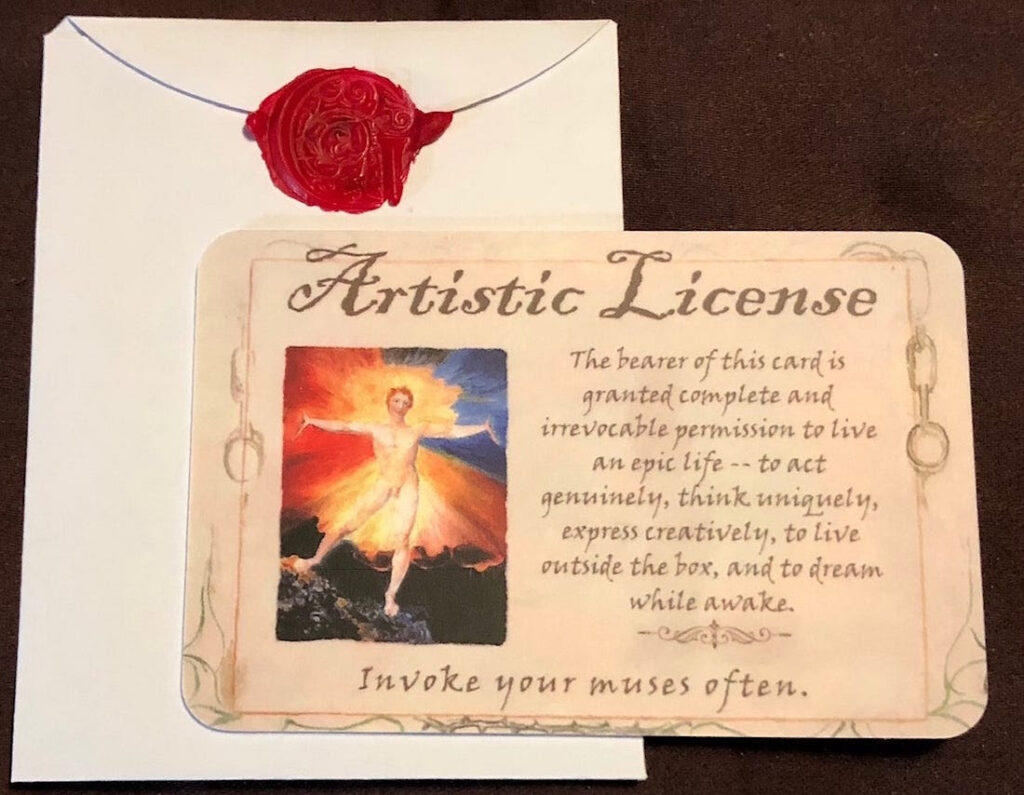
I created this Artistic License years ago and have been selling them every holiday season. I hear from people all the time that they still have theirs in their wallet and get a kick out of it when they encounter it. Come on, admit it, we all want to feel like we have artistic license. I sell them for $5 each, postpaid, or 5 for $20 (pp). Foreign orders require the exact shipping cost. Message me at garethbranwyn@mac.com if interested.
Your Chance to Win a Flashlight!
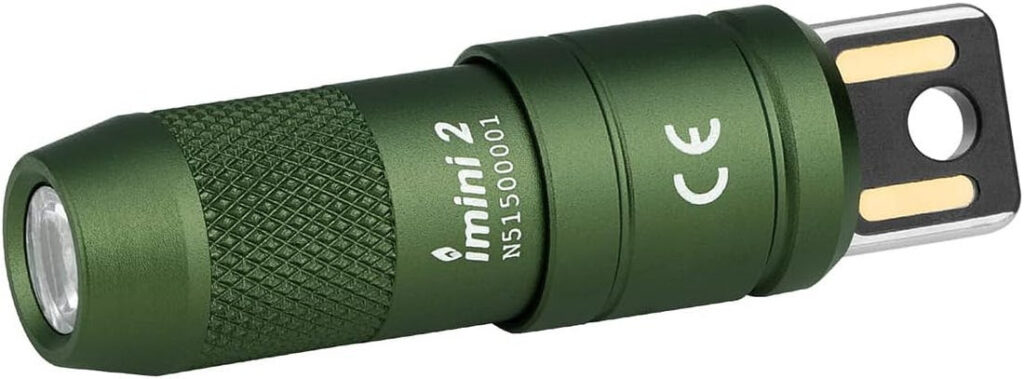
I was so intrigued by the Olight iMini flashlight that Chris Notap recommended above that I immediately bought one, and man, is it a cool little bit o’ kit. It’s everything he says and more. Every keychain (and home, car, boat, shop) needs one. So, I decided to give three of them to newsletter readers!
Here’s how it works:
- Every existing newsletter subscriber will get one entry in the drawing. Paid subscribers will bet two entries.
- For everyone who brings on a new subscriber, you’ll get one drawing entry for each new signee (just email me the addresses they used to sign up).
- For everyone that upgrades to a paid subscription, you will get three entries.
I will do the drawing on Dec 16th and have the lights direct-shipped immediately. I can only mail to US subscribers. If you are out of the country and you win, I will send you a PDF copy of my book Tips and Tales from the Workshop, Vol. 2.
12/12/2511 December 2025
Sun-powered Africa/Vietnam Trains/Travel Laptop Mic
Nomadico issue #183
Solar Power is Growing Like Mad, Especially in Africa
While some regressive political figures look at clean energy with scorn instead of seeing it as the key to abundance and growth (like China does), the advance of solar power worldwide is astounding by almost any measure. Nowhere is this more evident than in Africa, where solar has leapfrogged development in regions the top-down, fossil-fuel-powered electric grid never reached. See this article on how Africa is building the future by skipping the past. Here’s an interesting stat from it to chew on: “[The cost of] Solar panels dropped 99.5% in 45 years. What if we’re only halfway through?”
A Guide to Rail Travel in Vietnam
James Clark of Nomadic Notes has several websites and newsletters about Southeast Asia. He has probably traveled on more trains in the region than anyone else and now has a site focused just on that aspect of travel in his adopted home base country. Check out Rail Vietnam if you will be moving around Vietnam and want to avoid the roads. He says, “This guide covers every train line in Vietnam, station information, and how to buy tickets.”
Afternoon Drinks in Thailand
If you’ve ever tried to buy beer at a 7-11 between 2:00 and 5:00 p.m. in Thailand, you probably a) been turned away and b) left very confused. A law dating back to 1972 has been in place all that time as a nanny state move to keep government office workers from sneaking out for a drink. For the next 180 days at least, in a move to boost tourism, there are no restrictions between 11:00 a.m. and midnight. See the details here.
Portable Mic for the Road
I do a fair number of interviews and video calls when I travel that require good sound quality, but I don’t want to pack the big microphone I use in the home office. Back in March I ordered this small mic that just plugs into my laptop USB port and can then be moved around to face the front. At under $20 it’s not studio quality, but when paired with wireless earbuds it has been good enough for a couple of podcast appearances. It goes into a pouch and takes up almost no room.
A weekly newsletter with four quick bites, edited by Tim Leffel, author of A Better Life for Half the Price and The World’s Cheapest Destinations. See past editions here, where your like-minded friends can subscribe and join you.
12/11/2510 December 2025
What’s in my NOW? — George Kosmopoulos
issue #234
George Kosmopoulos codes mobility solutions at Cowboy in Brussels, with two kids and an artist wife – Mimi Kunz. Built unsuccessful apps, teaches web development, practices BJJ, and thinks a lot about resilient futures while drinking too much coffee. Currently wondering if any of this counts as building something meaningful.

PHYSICAL
- The collection of “The Culture” books by Iain M Banks – When reading a lot, one cannot re-read too much. This series though is constantly re-readable. It’s adventures from the perspective of an Utopia dealing with the rest of the universe. Somehow, the author manages to make adventurous stories in a variety of worlds and there’s always some depth to discover and ponder over.
- Micra Leatherman Keychain Multitool – This is the leatherman I have on my keychain. I thought it’d be mostly useless accessory that would make me look good and since then it has been used and overused.
- Haflinger Slippers – I’m running up and down my house with my kids in my arms and so I found that I needed solid slippers and these do the job. I never fall with them and I am always comfortable.
DIGITAL
- Bedtime mode on my Android phone – It’s like a reverse alarm for when I’m tired and somehow end up scrolling. My phone goes grey and tells me it’s time to go to bed.
- Connections – I love this game! It’s simple and smart at the same time and I play it every evening with my wife. When we have friends in the evening I take out pens and paper and we do it as a group
INVISIBLE
Finite games are played to win seriously with defined rules and endpoints, and infinite games are played for the purpose of continuing play itself with fun. — James P. Carse
Life is an infinite game, one of the only ones – the rest is finite games and you can always not play finite games.
Sign up here to get What’s in my NOW? a week early in your inbox.
12/10/25ALL REVIEWS
EDITOR'S FAVORITES
COOL TOOLS SHOW PODCAST
WHAT'S IN MY BAG?
10 December 2025

ABOUT COOL TOOLS
Cool Tools is a web site which recommends the best/cheapest tools available. Tools are defined broadly as anything that can be useful. This includes hand tools, machines, books, software, gadgets, websites, maps, and even ideas. All reviews are positive raves written by real users. We don’t bother with negative reviews because our intent is to only offer the best.
One new tool is posted each weekday. Cool Tools does NOT sell anything. The site provides prices and convenient sources for readers to purchase items.
When Amazon.com is listed as a source (which it often is because of its prices and convenience) Cool Tools receives a fractional fee from Amazon if items are purchased at Amazon on that visit. Cool Tools also earns revenue from Google ads, although we have no foreknowledge nor much control of which ads will appear.
We recently posted a short history of Cool Tools which included current stats as of April 2008. This explains both the genesis of this site, and the tools we use to operate it.










